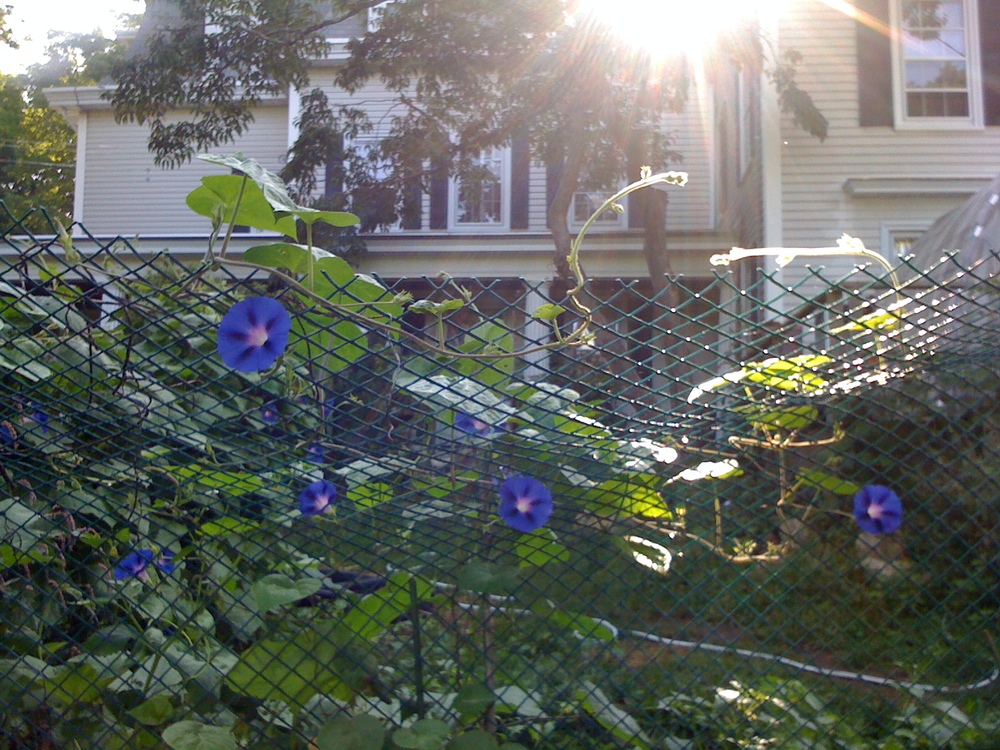 You may have seen references to the number "350" in recent months, in connection with concerns about climate change. I've seen many of my "tweeple" (twitter contacts) who are involved in green issues and the good food movement talking about it, and finally checked it out.
You may have seen references to the number "350" in recent months, in connection with concerns about climate change. I've seen many of my "tweeple" (twitter contacts) who are involved in green issues and the good food movement talking about it, and finally checked it out.
And here's the deal: In a few short days, an organization by the same name (number?) will coordinate an international day of action, with almost 4,000 events currently planned in more than 160 countries, all around the world.
So what's all this about? Nothing less than our common future.
One of the measurements used in calculating global warming and climate change is how much carbon dioxide (CO2) is in the atmosphere. Right now, scientists have determined that there are 387 parts per million of carbon dioxide in the atmosphere. Doesn't seem like much, right? Well, they also have determined that the amount of carbon dioxide that allows for the maintenance of a liveable planet for humanity is 350 parts per million. (More explanation here.)
Right. So we're currently OVER the sustainable level. What does that mean? Well, it means that our climate is changing, ice caps are melting, weather is getting wilder, and droughts and floods are affecting the lives of people all over the globe. It's already happening, now. This is key: many of the projections that scientists were making a few years ago have been blown out of the water--now, scientists think that the Arctic ice will melt completely in the summertime in just a few years (2011-2015) rather than 85 years from now as was projected just a couple years ago...
So are we just doomed? Thankfully, no. But we have to get the concentration of carbon dioxide moving in the other direction, and we have to start now. We need to stop these current changes from taking on a life of their own, and if we don't get the levels down, the climate will change too much for us to be able to reverse.
350 describes it this way:
We're like the patient that goes to the doctor and learns he's overweight, or his cholesterol is too high. He doesn't die immediately—but until he changes his lifestyle and gets back down to the safe zone, he's at more risk for heart attack or stroke. The planet is in its danger zone because we've poured too much carbon into the atmosphere, and we're starting to see signs of real trouble: melting ice caps, rapidly spreading drought. We need to scramble back as quickly as we can to safety.
If someone wants to argue that the economic costs are too high, or they don't believe the science, I don't know what else to say except that this world is too precious to gamble with. I don't want to roll the dice and hope that the projections are wrong, do you? (This You Tube video by Gary Craven goes over the logic of our various choices pretty clearly.)
So, what can you do?
- For starters, you can get involved on October 24th, by attending or organizing an event near you (find one here, organize and register your own here). The goal of these events is to bring attention to this issue, to raise awareness, and to pressure our politicians to act. There's lots of info, ideas, organizing plans, and resources on the website.
- You can also tell the people you know about 350, and encourage them to get involved (social network linkies here, too).
- If you want to make concrete changes to reduce your personal carbon impact, try out this carbon calculator and find ways to reduce your output.
- Take a look at the example of "No Impact Man," a guy in Brooklyn, NY who decided to see what it took to lead a zero-emission life. We don't all have to go that far, but we can take a few small steps and have a big impact--which is why he started the No Impact Project, providing concrete, doable actions that we can all take. A movie about his experience just came out--learn more about it, here.
- There are also petitions and other political actions on the We Can Do It, Repower America website.
- And you can follow what's happening on the road to Copenhagen, the site of a major international conference on climate change taking place in December.
It's easy to get overwhelmed by the scale of the problems we face...but, then, what's the alternative? Sitting back and just flipping the channel?
One of the first times I came to visit the farm, I caught sight of a sentence highlighted on their brochure, which spoke to me so deeply I could hardly think about anything else for weeks:
Let us live as if everything matters.
Because it does.
And that's the truth of it. I think we know it deep inside when we let ourselves grasp the enormity of the situation. We were entrusted with an amazing gift, this tiny, unique, bluegreen orb out there in the vastness of the universe, our only home...and how we live here matters.










